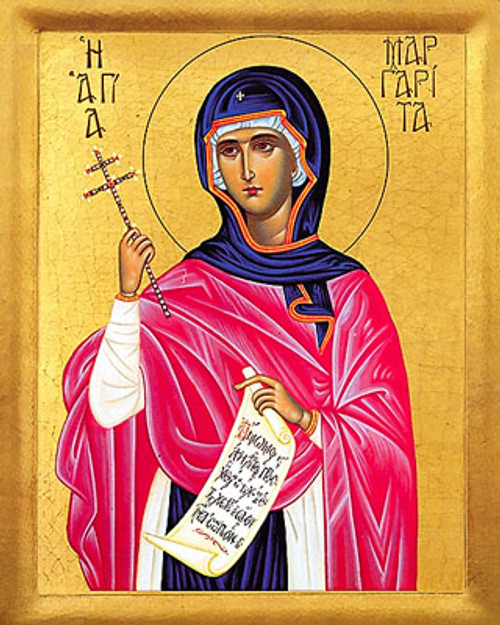St. Richard, King of Wessex (+722)
Commemorated February 7
St. Richard and his holy, royal family are outstanding examples among the Anglo Saxons for the way in which kings and their families have worked in the spreading of the gospel in their own lands and overseas. St. Richard was one of the kings or princes of Wessex, related to the royal house of Kent, and married to Winna, herself a descendant of Cerdic and aunt to Boniface of Crediton.
Richard was brought up as a Christian and his faith was real and firm. When his eldest son Willibald was three years old, the child fell grievously ill, and there seemed to be no hope for his recovery. His father wrapped him in a blanket and, mounting his horse, rode out into the night to a wayside crucifix at a crossroads near to the village where they lived. Butler tells us that
Saint Richard, when living, obtained by his prayers the recovery of his younger son Willibald, whom he laid at the foot of a great crucifix erected in a public place in England, when the child's life was despaired of in a grievous sickness.
Richard placed the child at the foot of the cross and knelt in prayer, pleading for his son's life. Willibald did recover, and two years later he was entrusted to Egbald, the abbot of Warham, near Winchester, to be trained.
When Willibald reached manhood, he returned to his family with a desire to spread the faith abroad, and persuaded his father and brother to accompany him on a pilgrimage to Rome and the Holy Land. Richard had a daughter, Walburga, by a second marriage, and she now entered the convent at Wimborne, under the Abbess Tetta. When Richard had renounced his royal estate, he set sail with his two sons from Hamblehaven near Southampton. They made a leisurely progress through France, spending time at various Christian centres including Rouen, and it seems that at some time during their journey Richard took monastic vows.
They reached Italy and came to Lucca, where the Cathedral had been built by an Irish monk called Frigidian, but known by the local inhabitants as Frediano. Richard, who was growing old and had become infirm during his travels, now succumbed to the heat and died. His sons saw to his burial in St. Frediano's church and then continued their journey. Later they joined their uncle St. Boniface and their sister St. Walburga in the work of converting the Germans. St. Walburga was the first abbess in Heidenheim. St. Willibald settled in Eichstatt.
Their father, St. Richard, is still venerated in Lucca. A famous account of the pilgrimage on which he died was written by his son's cousin, the nun Hugeburc, entitled Hodoeporicon (Baring-Gould).
Exact Dimensions:
Small ~ 3.6x6"
Large ~ 5.9x10"
X-Large ~ 10x17"
Please contact us for larger sizes.







